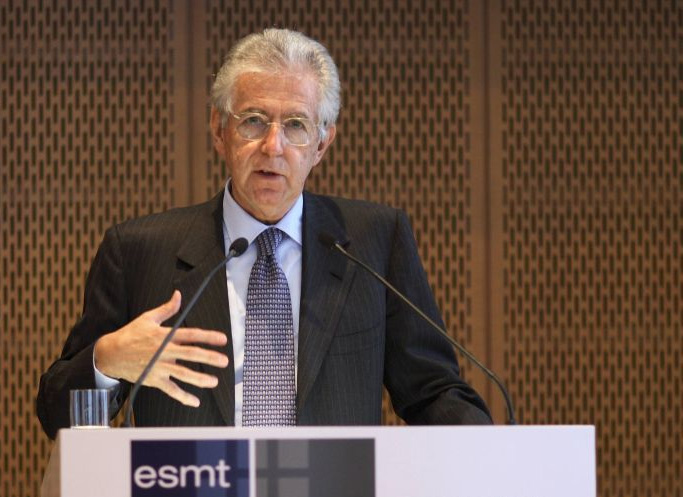Economy Watch: Change for Italy, Recovery for Japan, Positives for U.S.
Italy's Berlusconi resigned over the weekend, and Mario Monti has temporarily taken the PM slot. Japan saw exports drive a burst of third-quarter growth. And U.S. consumer sentiment is up -- for now.
November 14, 2011
By Dees Stribling, Contributing Editor
On Saturday the longest-serving Italian prime minister of the post-fascist era, the fun-loving Silvio Berlusconi, resigned his post and shuffled off into political retirement, though he remains a billionaire media mogul. Presumably the Italians — and the rest of Europe and the world for that matter — hope that his temporary replacement, an economist named Mario Monti who is frequently occurred to as a “technocrat,” will oversee some semblance of order in the handling of the massive Italian debt.
For the moment, Monti’s main task is to form a new government from the byzantine factions inhabiting the Italian parliament, which might be a difficult task, though there is some sense of urgency about the current situation that might help get a government together. Then the hard labor begins. About 200 billion in euro-denominated Italian debt ($276 billion) matures next spring, and for a brief unpleasant moment last week, the yield on that debt reached an unsustainable 7.4 percent, but later settled below 6.5 percent. All bets are off if Monti doesn’t make any progress.
On the other side of the world, the Japanese government reported a burst of activity in the country’s economy. According to the Cabinet Office on Monday (in East Asia), the Japanese economy grew at an annualized 6 percent during the third quarter of 2011, the first quarterly increase since the March earthquake and tsunami.
As usual for Japan, exports drove growth. Quarter-over-quarter, exports grew 6.2 percent in the third quarter. Much of the recovery, however, probably represents an unsustainable surge due to the fact that international supply chains linking Japan with the rest of the world have been repaired, enabling much pent-up demand for Japanese goods to be satisfied. Going forward, a wild card in further export growth remains in the form of the damage done to Japanese-owned industrial infrastructure in Thailand, much of which has been flooded.
U.S. Consumer Sentiment Up for Now
The mid-month November reading of the Reuters / University of Michigan consumer sentiment index came in at 64.2, compared with 60.9 for the entire month of October. Consumers seem to be more optimistic about the future, since the expectations component of the index drove the increase.
In fact, the mid-November reading was the most optimistic consumers have been since June, just before the double-punch of a near-miss default on U.S. debt and then the downgrading of U.S. debt, all the while against a backdrop of lousy employment numbers. More recently, employment numbers have been a little better, and there’s some hope that maybe, just maybe, the Europeans will manage not to blow a hole in the world economy right now.
Then again, sentiment is a fragile thing, and the next blow might not come from anywhere as distant as vexed and troubled European capitals. After all, the Congressional “supercommittee” looking to cut the federal deficit has a looming deadline, and so far indications are that they might not live up to that nickname.
Investors were feeling better at the end of last week as well — or perhaps it’s merely the latest upward motion of the new-normal yo-yo market. In any case, the Dow Jones Industrial Average gained a sizable 259.89 points, or 2.19 percent on Friday, while the S&P 500 was up 1.95 percent and the Nasdaq advanced 2.04 percent.








You must be logged in to post a comment.